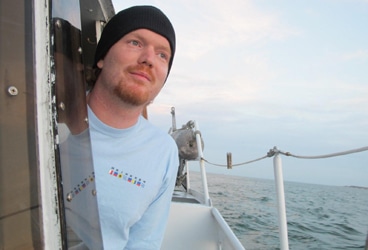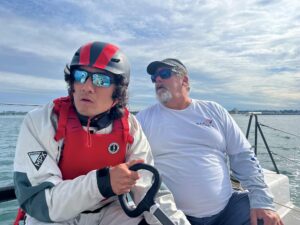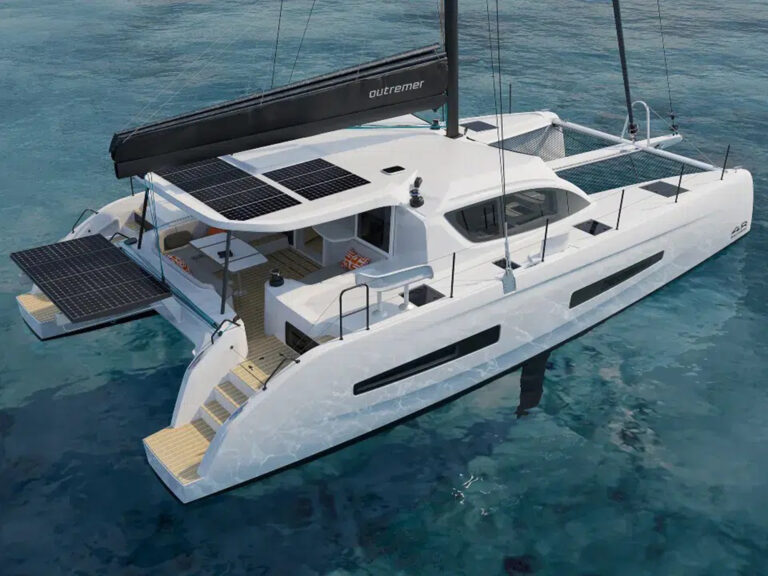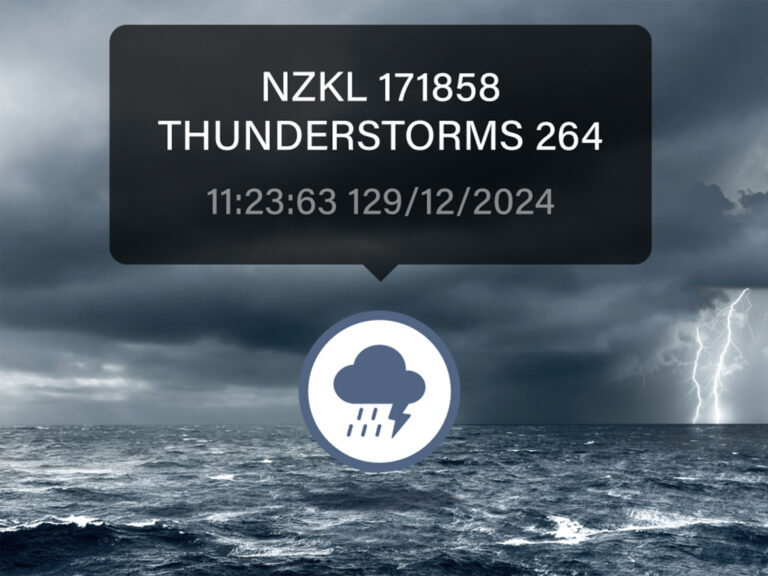
After 26 days of deploying and redeploying our Manta net day and night we have finally finished collecting the micro plastic samples and can head for home. It’s a good thing as those man-o-war jellyfish have really done a number to Nikki’s hands and her eyes are still red from the stingers that got accidentally rubbed into them. We have sailed over 4,400 miles at this point and have another 1,500 miles left to sail before we will be back in the Chesapeake Bay. We still have secondary scientific objectives but those can be done under way. I will think about our journey back tomorrow, today we celebrate the completion of our Giant ‘W’ with the last of the scotch and salted ham.
I’ve always wondered what the sailing was like in the Bermuda-Azores High AKA the North Atlantic Gyre. During my first two singlehanded transatlantics, I sailed north then south of the massive doldrum. I’ve sailed both sides of the Northern Atlantic from Ireland to West Africa on one side and the equator to the Arctic on the other, yet I had never sailed through the middle of the North Atlantic Ocean. I knew that because it is an area dominated by high pressure the winds would be light, but I never met anyone who actually sailed through it.
The average barometric pressure on our earth’s oceans is 1013 millibars. In the Bermuda-Azores High we have had between 1020 and 1026 millibars. What that means is you better bring some extra diesel or be prepared to drift aimlessly from time to time. While sailing east toward the Azores we only used 20 gallons of fuel the first 2,200 miles because we were in the westerly trades. Since we went south of the westerlies and started zigzagging through the Gyre we have burned 90 gallons of diesel. That means we have had to motor for 900 of the last 2,200 miles. I motor at 1,200 to 1,400 RPM, it’s not fast but you get the most bang for your buck. Typically when you do get wind its light and out of the east (Or northeast or southeast), although the further west you sail the more often the wind will come out of the south or southwest. There is not much rain except for the little squalls that pass by from time to time. The squalls usually like to visit in the middle of the night, sometimes accompanied by lightning, with too much wind to try to collect some rain water. There is very little shipping traffic in the Gyre. Besides the random trash floating by there is very little of anything. Well, there’s a whole lot of water and sky.
I’ve had so many problems with my diesel motors on previous boats. They were all Volvo Pentas and I always felt like I had to cross my fingers every time I tried to start them. I can’t claim to be a great mechanic but since I’ve had so many different engine problems over the years I have slowly learned quite a bit about a diesel. It’s really a love/hate relationship. I love them when they get me in and out of anchorages and help me quickly avoid a potentially dangerous situation, but I absolutely hate them when they break over and over again. It’s amazing how much money a bad diesel can drain from your cruising kitty. One of the reasons I bought this boat was because the diesel had been rebuilt and only had 600 hours on it. Its starts right up and runs beautifully (I’m knocking on wood as I write this). Its only problem, like all Perkins 4108 50hp diesels is it leaks oil. I’ve had several good mechanics tell me how it’s a great engine but they all leak regardless of the rebuild.
Since we left the Chesapeake Bay we have motored 309 hours and I’ve had to add an extra gallon of oil to keep the engine topped off. Then again, looking on the bright side, since I add oil to it so frequently it’s kind of like giving it a perpetual oil change. At least the oil is always fresh. It’s like they preplanned this when they built the boat because they built a special rectangular tray under the engine that catches all leaky oil so it doesn’t end up in the bilge. All this means is I have to bring extra oil and check the dip stick regularly. Considering my history with bad diesels if that’s my only problem then I’m a happy sailor.
We have 50 gallons of diesel left for the last 1,500 miles. We will be sailing close by Bermuda on the way back and will stop only if we are running out of fuel or need to hide from a passing hurricane. To be honest, we had to spend all the money we raised just to leave the dock so we only have enough reserve cash to buy 20 gallons of fuel in Bermuda. We also can’t send any pictures at sea because it costs between $5 and $15 per picture using a satellite phone and we weren’t able to budget that type of expense. We weren’t even able to budget some wine and chocolate let alone extra sat phone data transfer for sending pictures. We are getting some good shoots and will post them as soon as we get back to land. I am happy we were able to successfully complete our primary scientific objective, now its time to head home without getting hit by a storm with a name.
Learn more about the voyage at the Ocean Research Project website.








